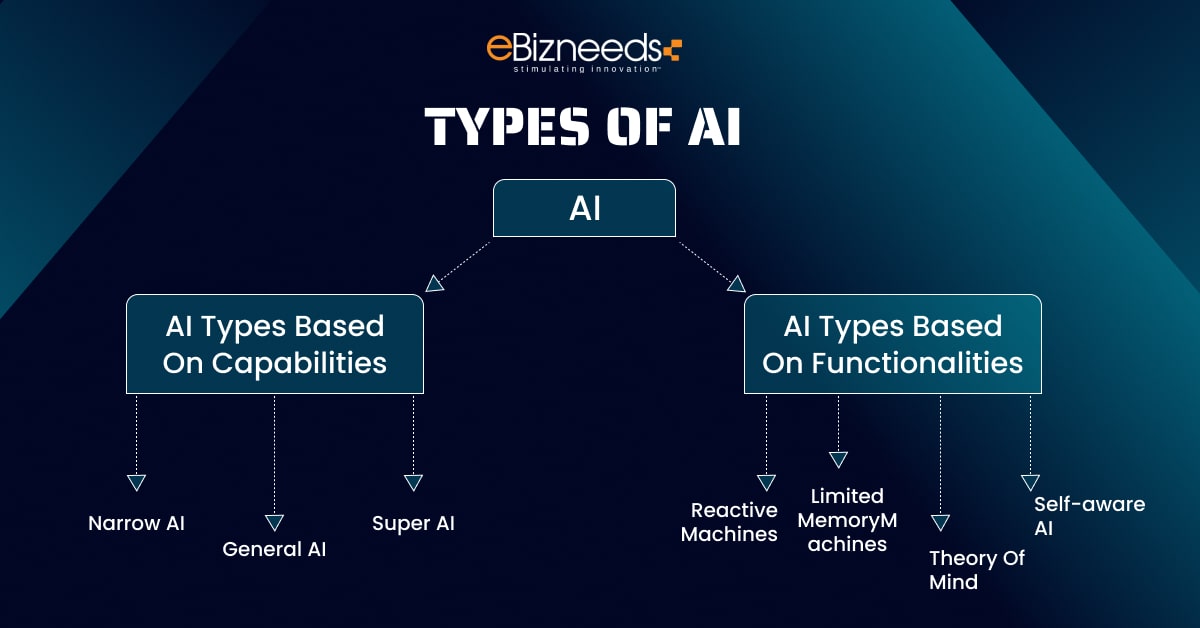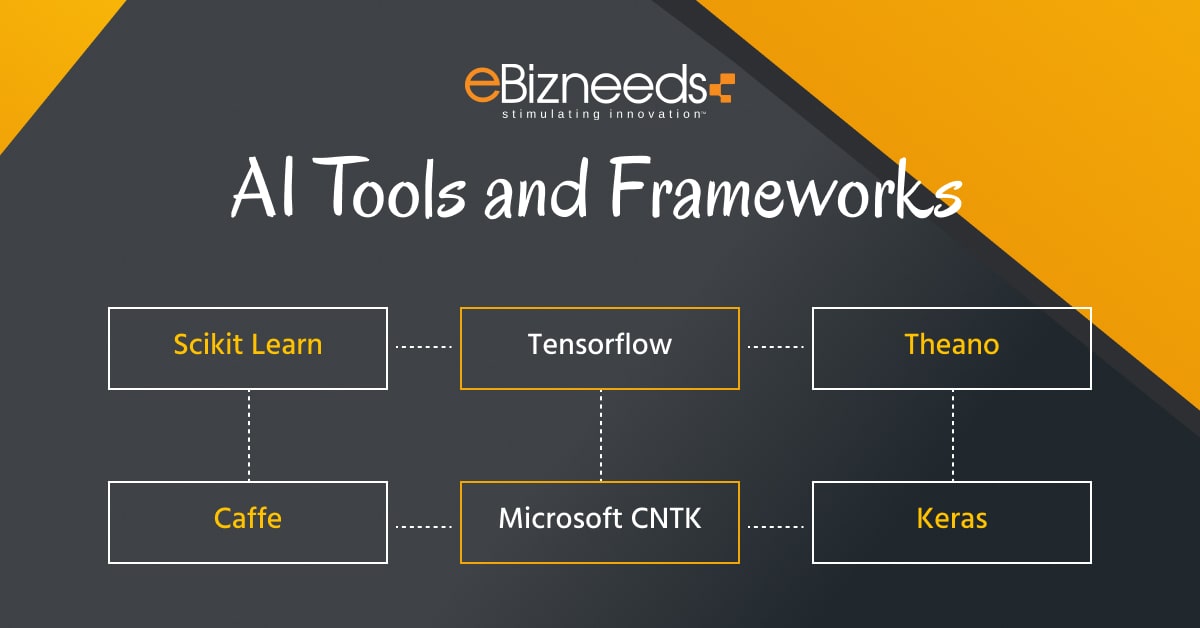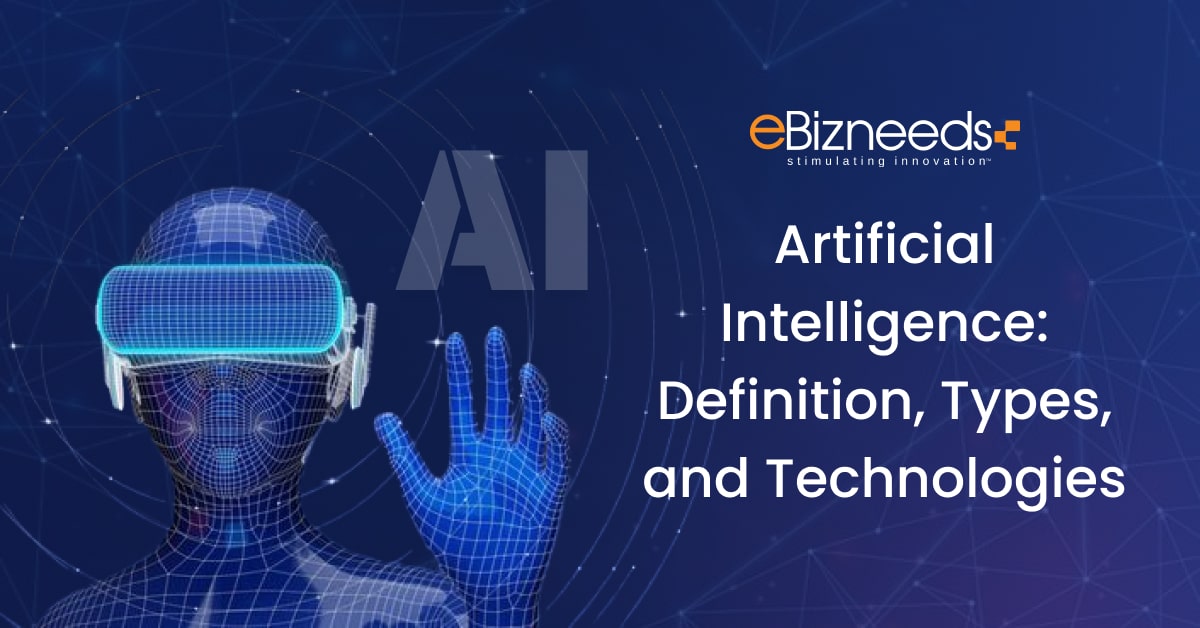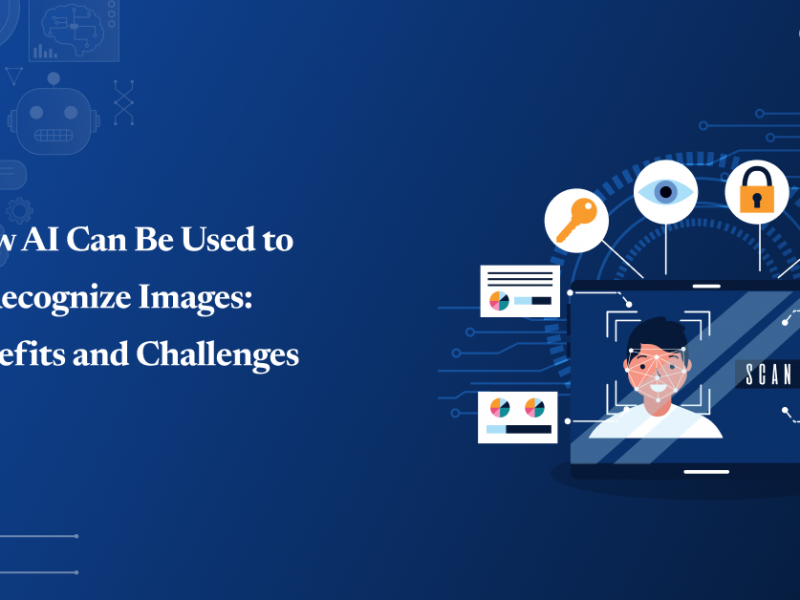Last updated on August 21st, 2024 at 12:07 pm
The reality of artificial intelligence is at its height right now. In the commercial sector, it is now simpler to process and utilize data because of AI. With the rise of Artificial Intelligence Tools, there are now more tools and AI frameworks for developers and data scientists to use.
We believe it’s crucial for artificial intelligence (AI) platforms to be simple for business people who require results to use, but yet strong enough for developers that want to push limits of statistical analysis with customized extensions.
Choosing the correct artificial intelligence framework or neural network library is the first step to success.
Instead of being a science fiction idea, artificial intelligence already exists into reality. As the name suggests, machines utilize it to figure out what to do.
The future of computers will depend on how much progress is made in artificial intelligence. And as the demand for artificial intelligence technology rises, more and more programmers are learning about this field.
Let’s explore what AI entails in more depth. Then, we’ll talk about its many kinds, frameworks, technologies, applications, and some of the most well-known instances of artificial intelligence.
What is Artificial Intelligence (AI)?
AI is illustrated as a field of integrating computer science and vigorous dataset that enables problem solving.
With artificial intelligence, machines are able to understand, sense, plan, act, and learn just like humans. AI systems can detect atmospheres, recognize objects, solve difficult problems, learn from past experiences, take that into account when making decisions, and copy structures.
These skills are used together to drive a car or detect faces to unlock device screens. The AI tools include natural language processing, machine learning, and computer vision. These innovative techniques allow computers to understand human language, learn from pictures, and make predictions.
Each technology grows and changes independently but is used in combination with other technologies, such as analytics, data, and automation. It may bring businesses up to date and help them to reach their goals. It can also improve customer service and make the supply chain to perform better.
Types of Artificial Intelligence
Artificial intelligence might be put into two major groups: AI driven by capabilities and AI centered by functionalities.
Let’s delve into some more types of artificial intelligence.


Let us first examine the Artificial Intelligence Types based on their capabilities.
AI Types Based On Capabilities
1. Narrow AI
Narrow AI is a goal-oriented AI and trained to do a specific task. It is a type of machine intelligence we see all around us today. Think of IBM’s Watson super computer and Apple’s Siri as examples of limited AI.
Narrow AI is also called weak AI since it only works within a small set of parameters, situations, and limitations that have already been set. For example, Netflix recommendations, self-driving cars, speech and picture recognition, and purchase suggestions on eCommerce sites are all examples of narrow AI.
2. General AI
It is another ai types that can do any intellectual task as a human. General artificial intelligence aims to create a system that can think for itself like a person. Research is being done on general AI that people are trying to work on computers with better cognitive skills.
3. Super AI
It’s an AI version of human intellect that can do any task better than a person. A computer with super AI could aid to solve puzzles, make decisions, think and learn independently, and talk to other machines. At the moment, super AI is just a thought experiment, but it shows how strong AI could be used.
Let’s look at the Artificial Intelligence Types and how they work.
AI Types Based On Functionalities
4. Reactive AI
It is an important type of artificial intelligence that always gives the same result. React AI is offered with recognised inputs. Furthermore, these machines cannot implement intuitive functionalities and also limiting their uses.
They have now reached their maximum potential and act as a strong basis for other kinds of AI to learn from and develop.
Reactive machines are the most basic sort of AI. They don’t remember or learn from the past; therefore, they can’t act on what they’ve learned. These systems focus on the current situation and take the best action based on what is happening.
People often use Google’s AlphaGo and IBM’s Deep Blue systems as examples of reactive machines.
5. Limited Memory AI
Currently, it is another type of AI that is one step forward from reactive AI. Machines based on AI with limited memory can study past data or actions and learn from them. They make use of ancient data for challenging tasks.
Machines with limited memory can only use and store data or information from the past for a shorter time.
For example, a self-driving car can remember the speeds of other cars in its area, their speed restrictions, the distances between them, and other information that will help it to get around in traffic.
6. Theory of Mind AI
This kind of AI can understand human emotions and beliefs and act like a person in social situations. This kind of AI hasn’t been made yet, but it’s possible.
These machines behave and emote like humans and are known to create their own decisions according to their learning and observations, much like we do.
Key examples are:
- Professor Cynthia Breazeal invented the Kismet robot head. It can read the emotions on people’s faces and copy them on its face.
- Another example is the Sophia robot, which Hanson Robotics made in Hong Kong. It stays smart and continues talking to people. It also has facial signs.
7. Self-aware AI
It’s about machines that are smarter than humans and have feelings, emotions, awareness, and beliefs. These systems are expected to be better than the human intellect and may also do our jobs better. Even though this AI will continue to operate in the future, efforts are constantly made.
This kind of AI is considered futuristic in different ways. There is further progress to develop with self-aware AI. In such a case, the machine can replicate human brain by observation and have spirits of its own.
If these machines are ever perfected, they will have the same consciousness and intelligence as humans. They can think, express themselves, and perform the most challenging tasks like us. Moreover, they will bring more speed and precision and ensure absolute excellence.
Artificial Intelligence Applications and Examples
Let’s discuss some applications and ai examples in detail:
1. Marketing & Advertising
Data analytics have been available for a substantial time. However, AI marketing is used to generate data and conduct predictive assessment to the next level. It is related to speed in testing and retesting data and precision in considering all factors.
All of this can occur with little to no human interference.
2. Real Estate
AI-powered apps can help real estate companies to reorganise and improve their operations, stay on top of market predictions, and get easy access to property values and the user data they need to sell properties that fit their needs and interests.
3. E-commerce
AI-powered websites and apps are the best way to make sure that users have a smooth experience in eCommerce. It can help brands to beat out their tough competition and come up with a solid plan that gives them an interesting edge.
Also, chatbots that use AI can be available 24 hours a day to answer customer questions and concerns.
4. Healthcare
AI is great for healthcare services because it has many different apps that experts in the field can use to learn new things and make important contributions.AI supports them by addressing better ways of treating certain medical circumstances.
Robust AI tools and apps can support possible diagnoses and the medical process with faultless accuracy.
5. Gaming & Entertainment
The entertainment and gaming industries were some of the first to really see the benefits of AI. It is used in the gaming industry to control the actions of non-player characters. This helps to shape the storyline of the game and point it in the right direction.
According to the entertainment sector, AI enables programme platforms and producers to give customers customised experiences by reviewing their viewing preferences and history.
Why Internet of Things Needs Artificial Intelligence?[Overview]
AI Tools and Frameworks
From the beginning to the end, people have always tried to make items that help them in their everyday lives from the tools used to make contemporary machines to the tools used to make programmes. Some of the most important AI Tools and Frameworks are:


Scikit Learn
Scikit-Learn is a Python package developed for machine learning. It is a set of tools for mining and analysing data. Popular Python tools like NumPy, SciPy, and Matplotlib built this AI system.
Anyone may use it in many ways as a predictive data analysis. You can contact to ai/ml development company to implement this this type of framework effectively.
- It adds to two important libraries – SciPy and NumPy.
- You can integrate algorithms with multiple systems using its detailed API documentation.
- A bunching, relapse, and order algorithm is used for AI and data mining.
- Use cases include finding spam, recognising images, figuring out the price of stocks, etc.
TensorFlow
Currently, TensorFlow is the deep learning library that people want the most. This machine-learning framework from Google is an open-source library that works well with Python.
It is one of the best artificial intelligence tools. It makes numerical computation easier, making it simpler and more precise to predict the future.
- Tensor flow is written in Python, a fairly popular language nowadays.
- It gives individuals detailed and well-documented guides.
- Executing TensorFlow programmes on your computer, in the cloud, on Android and iOS devices, and on your PC is easy.
- This framework can do a lot of computing. Because of this, it may be used on any CPU or GPU.
Theano
Theano relies on Python, a programming language that has been used for a long time and is known for being fast.
This artificial intelligence tool helps with machine learning and deep learning studies and can improve the accuracy of networks that demand a lot of computing power. It does this by using GPUs instead of CPUs. For example, it takes a lot of resources to compute multi-dimensional arrays, yet Theano can do it.
- It has a good accuracy percentage, even when the numbers are small.
- Unit testing is an important part of Theano since it lets users to check their code and find and fix issues more quickly.
- Theano works well with applications that use a lot of data but must combine with other libraries.
- Both the CPU and the GPU can get the most out of it.
Caffe
Caffe is a deep learning network that already has a collection of trained neural networks loaded into it. It should be your first choice if you don’t have much time. This artificial intelligence tool is known for its ability to handle images and offers MATLAB support.
- Its models are all composed of plaintext schemas.
- It works quickly and efficiently since it’s completely loaded.
- A dynamic open-source community where people can talk and write code together.
- Supports the modelling of CNNs (convolutional neural networks) and connects C, C++, and Python.
- It is fast and effective at calculating numerical operations.
Microsoft CNTK
Microsoft CNTK is an open-source platform built around neural networks that is quicker and more flexible. It uses them to change text, messages, and voices.
This artificial intelligence tool offers a good environment for scaling since it evaluates the machine models faster overall while ensuring they are correct.
With a highly expressive and easy-to-use design, Microsoft CNTK is the best option for huge companies like Skype, Cortana, etc., since it can connect to large and important datasets.
- Highly optimised for effectiveness, versatility, speed, or interconnections at a high level.
- It has built-in parts like a hyperparameter modification, trained models, reinforcements, a CNN, and RNN.
- Since it works with Python and C++, this framework uses several servers simultaneously. It makes it easier to understand and speeds up the process.
Keras
It is a high-level, open-source library for neural networks with a Python interface. This easy-to-use tool is developed on top of TensorFlow and is also easier to use than TensorFlow itself. It uses fast prototyping, which helps modern experiments go from beginning to end with minimal delay.
Keras works well on both the CPU and GPU. Keras is among the best open-source tools used today for artificial general intelligence (AGI).
- Instead, it works as a user-friendly interface that is easy to add, it gives a high degree of abstraction, which makes it simple to set up neural networks no matter what framework they are on.
- This Python deep learning library is an elevated-level neural network API that can be used on top of TensorFlow or Theano. It supports flexibility and all emotions.
- It makes it easy to add new modules, and neural layers, cost functions, and other independent parts can be added with few limits.
The Latest Artificial Intelligence Technologies
There are a lot of technologies that use AI in some way, either directly or indirectly. It is discussed given below:
Natural Language Generation
Natural Language Generation aims to turn any organised data into natural language. You may think of natural language generation as a process that transforms ideas into words.
For instance, a child might see a butterfly fluttering in a garden in a lot of different ways. Some people call these concepts. But when a child talks about how he thinks in his native language (his mother tongue), this is called “natural language generation.
Speech Recognition
Speech recognition is one of the AI technologies that turns human speech into a format that computers can understand. The procedure is incredibly beneficial and helps people and computers talk to each other.
Speech recognition allows people and computers to talk to each other. The technology can understand and translate speech in many different languages. It allows the computer to talk to people more quickly and easily.
Siri on the iPhone is a perfect example of speech recognition at its top level.
Virtual Agents
A computer programme that talks to people is called a virtual agent. Chatbots are used as customer service agents in web and mobile apps. They can talk to people and answer their questions.
Google Assistant can help you to set up meetings, and Amazon’s Alexa can make shopping easy. IBM Watson knows how to answer the most common questions that people have about customer service. Virtual agents also use the software as a service.
Decision Management
Modern organisations are putting in place decision management systems that turn data into predictive models by converting and interpreting the data.
Enterprise-level apps use decision management systems to receive current details that assess business data and assist in making choices for the whole company. AI technologies for decision management help people make decisions quickly, avoid risks, and automate the procedure.
Biometrics
Biometrics is the study of recognising, measuring, and analysing the human body’s structure, shape, and behaviour. It makes working together easier for people and robots since it works with touch, pictures, voice, and body language.
Mostly, AI researchers of the market are the main reason for using it. You can consult with AI/ML Development Company to build this type of AI.
Machine Learning Platforms
Machine learning is a field of computer science and other AI technologies. Its goal is to develop innovative ways for computers to learn and, as a result, get smarter. Machine learning platforms are increasingly popular with algorithms, APIs development (application programming interfaces) and training tools, huge data, and apps.
They use a portion to put things into groups and make predictions. Some firms that market machine learning platforms include Amazon, Google, Microsoft, and SAS.
Deep Learning Platforms
Deep learning is a part of machine learning that relies on artificial neural networks. The algorithms in this new technology use artificial neural networks. It can recognise speech, recognise images, and predict anything automatically.
During the DL procedure, learning occurs at several levels, and each level can turn the set of input data into abstractions that are both more concrete and more abstract.
Artificial Intelligence Vs. Machine Learning Vs. Deep Learning
Robotic Process Automation
Robotic process automation is the way business processes work when they copy human tasks and do them automatically. Artificial intelligence is also extensively used in industry to automate certain operations. Manual robotics can do the job, but it doesn’t have the automation it needs to do it without any help from a person.
Such automated solutions aid in areas too large for people to work in.
NLP (Natural Language Processing)
Natural Language Processing looks at how human languages and computers work together. It uses text analytics to look at how sentences are put together, how they read, and what they mean.
Many security systems and other systems that look for fraud use this technology. Many automated, virtual assistants, and apps utilise NLP to gather unstructured data.
Image Recognition
Image recognition is the process of figuring out what something is in a picture or video. It can help with image searches and be used to find licence plates, diagnose diseases, and learn about people. A use case for this technology can be seen in the image to text converter that makes content in images editable and indexable. Thus, allowing easy retrieval of information when required.
Conclusion
Businesses that used AI early on and understood its benefits did better. AI is what keeps the organisation going and swiftly increases productivity. AI is becoming more common in the workplace as digital operations have removed the monotony of paper-based processes.
As this revolution brought about big changes, so will the arrival of AI bring about big changes in every part of the economy.
At the center of this change are the AI-powered tools that help organisations to concentrate on efficiency and identify better ways to make money. Businesses have to go through a lot of trouble to get the correct artificial superintelligence solutions for their needs.
With the right AI solution, firms may be able to save more money and make more money.



Naveen Khanna is the CEO of eBizneeds, a company renowned for its bespoke web and mobile app development. By delivering high-end modern solutions all over the globe, Naveen takes pleasure in sharing his rich experiences and views on emerging technological trends. He has worked in many domains, from education, entertainment, banking, manufacturing, healthcare, and real estate, sharing rich experience in delivering innovative solutions.





